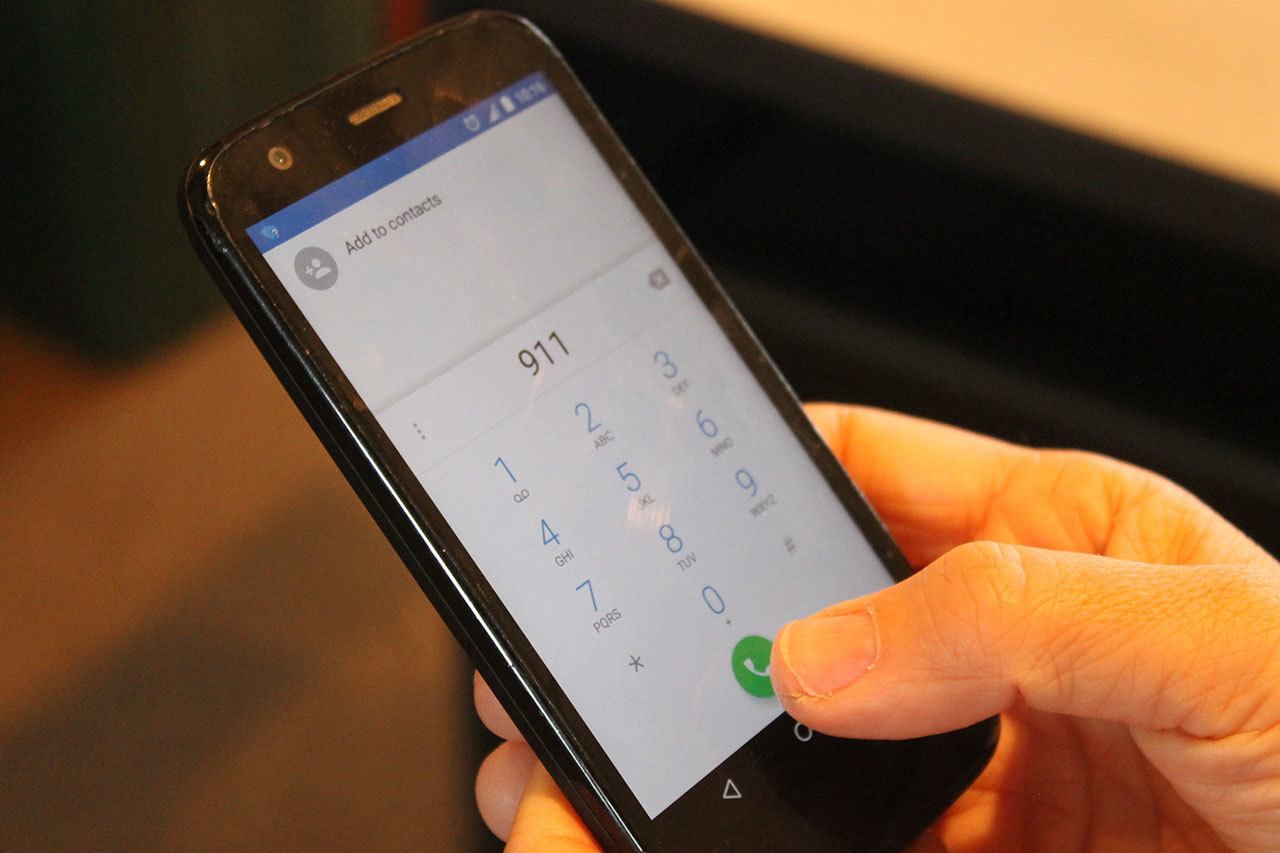When Helen Clover saw a fire at South Beach two years ago, she used her cell phone to call 911. She relayed her location, but to her surprise, the dispatcher had never heard of San Juan Island.
“The dispatcher said ‘Oh, is that one of the outlying islands?’” said Clover. “I went, ‘Aren’t you on the island, don’t you know?’”
The dispatcher was more than four hours away in Kittitas County. Clover said it took about five minutes to be rerouted to San Juan County’s emergency services, which responded quickly to the call.
“If it had actually been a more serious situation, like if someone was hurt, I’d kind of be ticked off,” said Clover.
It’s a problem throughout the nation, where the ubiquity of cell phones hasn’t caught up with emergency service operations. According to the Federal Communications Commission, about 70 percent of 911 calls are placed by wireless phones.
San Juan County Sheriff Ron Krebs explained that cell phones use the signal of the closest cell phone pole to direct emergency calls based on the pole’s location — not the caller’s. Landline calls go directly to the correct dispatch. San Juan County receives daily emergency calls from Lummi Island and other Whatcom County locations, which they reroute, said Sheriff Krebs. Time to transfer callers from dispatches is minuscule, added the sheriff.
The confusion has prompted some islanders to prefer the Sheriff’s Office main phone number for emergency calls, or the emergency line, directly, at 378-4141. Calling the Sheriff’s Office main number does not signify the call is an emergency, said the sheriff, who assured 911 is the only number to use during a crisis.
“In a moment of panic and stress, you don’t remember phone numbers, but 911 is engraved in your head,” said Sheriff Krebs.
When Megan Hoyt drove by a car accident off Enchanted Road on Orcas Island last October, her cell phone had no service. Yet, she was still able to reach a dispatch, which rerouted her to Anacortes and then San Juan County in about a minute. If a cell phone carrier has no signal, it can use another carrier’s to make emergency calls, according to the FCC.
“If I had used the main line, it probably wouldn’t have gone through on my cellphone,” said Hoyt.
Rock Island and its parent company, OPALCO, are expanding cell phone reach throughout the county, by adding 38 T-Mobile poles by the end of 2017. According to Rock Island’s Dan Burke, before this partnership, Verizon had the most cell phone poles in the county, with three.
“The partnership with T-Mobile is part of fixing the 911 issues,” said Burke. “We to have to be able to receive and make 911 calls.”
Some dead zones will always occur, according to Burke, because of the island’s geography. It’s hard to find locations to place poles to bounce signals off of, thanks to the large amount of trees and valleys, as well as the surrounding water.
That’s why wireless calls, on the west side of San Juan Island, bounce off Canadian cell phone towers — they are the closest towers and Rock Island can’t place any there. Those with T-Mobile service, which is now the most reliable network in the county thanks to the added poles, will not be charged for calls that bounce into Canada because the company has no international charges, said Burke.
Next, Burke would like to see all county emergency services use the same computer program on the T-Mobile wireless network. Checking into a location on the system would automatically update all users and log the events. Various emergency services (like fire and EMS), on different islands, would know the location of the emergency and who was in route, using one form of communication.
Some, like the San Juan County Sheriff’s Office, already use the program, but Krebs said there are no current discussions for everyone to switch to what he called an expensive software.
“Having better connectivity in the county definitely helps with communication,” said Krebs.



